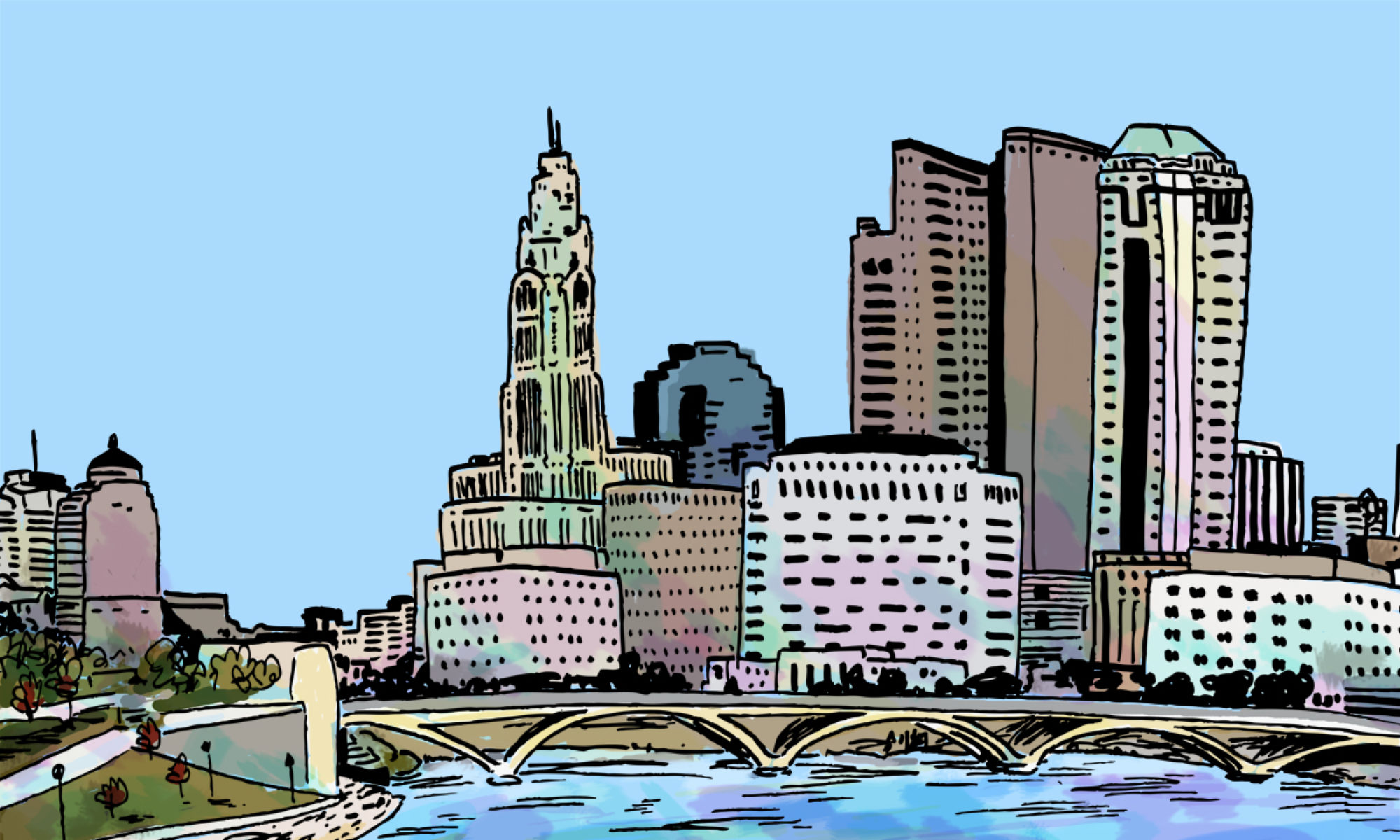Darryl Banks is an artist that has been working professionally in comics since the late 1980’s. Born in Columbus, he is best known for his work on Green Lantern, but has completed work for series such as Wild Wild West and Doc Savage. Besides his professional work, he’s helped to shape many artists in our community by teaching Illustration and Comic Book Design at our famed Columbus College of Art & Design.
1. You grew up in Columbus. Can you tell us how growing up here helped to drive you to become an artist and whose work inspired you?
By growing up in Columbus, I was always around family and extended family that were supportive and encouraging in my artistic endeavors. I remember being inspired by all of my favorite comic book artists like Sal and John Buscema, Alan Davis, John Byrne, Arthur Adams, and Kevin Nowlan to name a few, but especially John Romita Sr.
John Romita’s work was bold, dynamic and possessed a clarity that explained why his work was also used in Marvel promotional ads. John’s take on Marvel characters was definitive. I was always amazed by this attribute of his artwork.
2. How did you come to work in comics professionally?
I showed samples of my artwork to many companies and received critiques and direction. I got my break in 1989. The first company to hire me was Innovation Comics, an independent publisher. Shortly after that, I worked for Millennium doing books such as Justice Machine, Wild Wild West, and Doc Savage. I worked for independent companies for five years before I got the opportunity to work for DC and Marvel Comics in the mid 1990’s.
3. What are some things that you either love or hate to draw and why?
I wouldn’t say hate, but children are challenging to draw. One mistake and they look too old. Children have much more subtlety in their faces than teens and adults. Of course, drawing superheroes are my favorite.
4. You’ve worked with writers such as Ron Marz, do you prefer working from a script with detailed panel descriptions or generally plotted outline?
Detailed script, most definitely. Specifics make for a better story flow. I also learn what the writer is trying to say with the story, characters, and setting.
5. Before the internet was a household commodity, how did artists come up with reference materials?
I got references from library books and magazines. A much more tedious task back then. I would buy magazines and cut out pictures and place them in themed folders. People, vehicles, architecture, etc.
6. One of the things you’re most known for is helping to create Kyle Rayner’s Green Lantern. What’s the most important thing about creating a visually striking character?
Simplicity. You should be able to distinguish a character from the silhouette.
Take Superman for instance. The ‘S’ symbol is known across the planet. His simple design has been an influence on many characters throughout comic history. Superman has a distinctive way that he stands, flies, and interacts with others.
It isn’t just the silhouette, but the pose as well. The silhouettes of Batman, Black Panther, and Wolverine have some similarities, but you can still differentiate them. Attitude as well as design must be considered in a good character design.
7. You’ve both attended Columbus College of Art & Design and taught there. How did being on both sides of the desk shape you as an artist?
CCAD really helped me understand the importance of deadlines, communication, and other necessities related to professionalism. It wasn’t until I became a teacher that I realized that how well you draw, paint, or design only accounts for about 60% of your success rate as an artist. The other 40% is about professional characteristics. Being on time, communicating well, not being egotistical, and being able to take criticism.
8. You were also at the forefront of one of DC’s biggest controversies, turning beloved Green Lantern Hal Jordan into a villain. Did you ever personally face any fan outrage or have any funny encounters?
We never really thought of Parallax as a villain, which was also the character’s standpoint. “No one is the villain in their own story.” There were some fans that didn’t like what was developing. The sales were very low beforehand so if they loved the previous take on Hal Jordan so much, they should have supported the book.
9. You have a new book out from Omnibus Press called “Black Book: The Art of Darryl Banks”. Can you tell our readers more about it?
My art book was part of a Kickstarter funded graphic novel called Harken’s Raiders. It was a World War II story by Ron Marz, myself, and other talents. Ominous Press included Black Books as a part of the funding incentive, which collected images by the main artist. This is my first art book and I love how it, as well as Harken’s Raiders, eventually turned out.
10. Let’s pretend you, Darryl Banks, have just been anointed the new Green Lantern and all the powers that come with it. What’s the first thing you do?
Good question! I would help with first responder type efforts like large scale forest fire fighting, search and rescue after earthquakes, and the like. Then assist with the space program. Getting to Mars would be easy!
